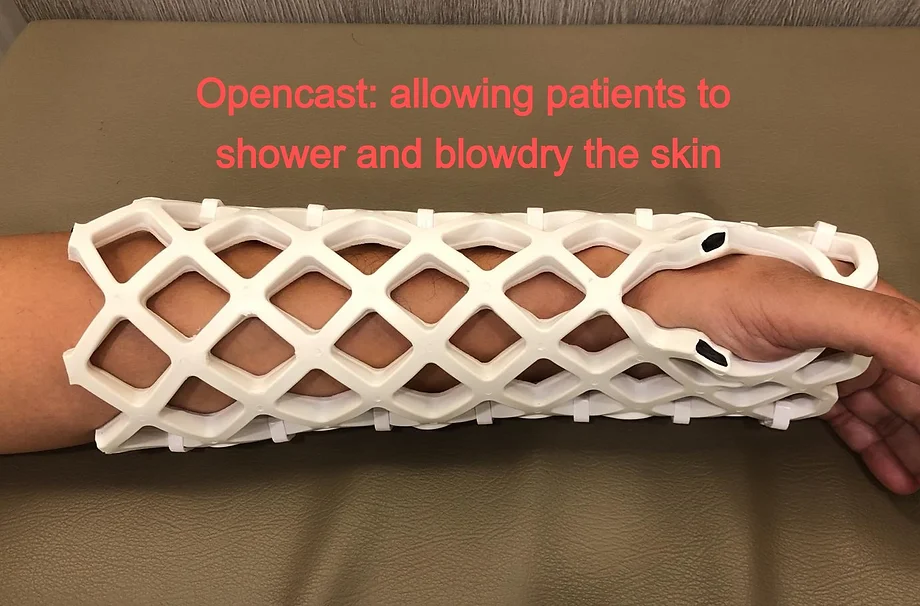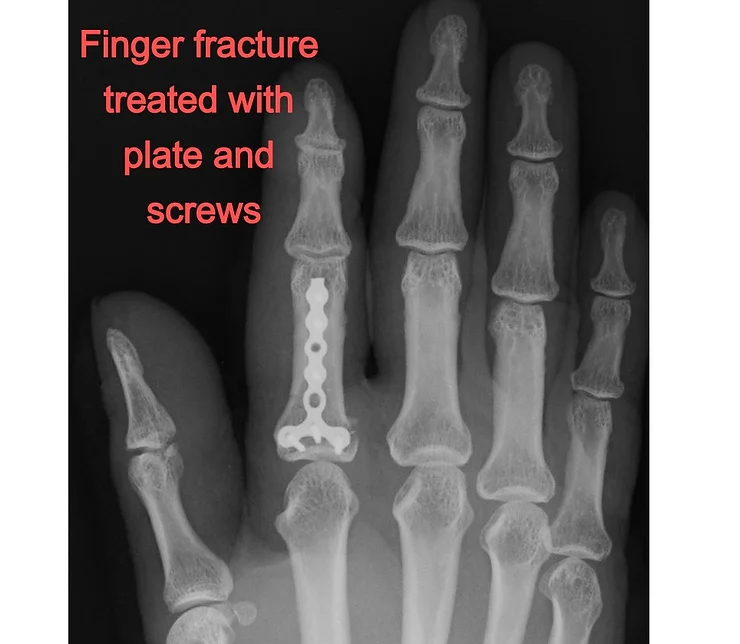Wrist and Hand Specialist Services in Singapore

The intricate network of bones, muscles, and tendons in your wrists and hands allows you to perform a remarkable range of activities, from delicate tasks to powerful movements. When pain or injury affects these essential parts of your body, it can significantly disrupt your daily life and overall well-being. To ensure proper management and restore your hand and wrist function, it’s crucial to seek specialised care from a wrist specialist or hand doctor in Singapore. This is especially the case for conditions like carpal tunnel syndrome, trigger finger, and wrist fractures, which often require the expertise of a skilled orthopaedic or hand specialist.

When to See a Wrist and Hand Specialist
Maintaining the health of your hands and wrists is essential for carrying out everyday tasks with ease. If you experience any symptoms affecting their function, it is important to seek timely medical attention. Consulting a wrist specialist or hand doctor in Singapore is recommended when you encounter persistent discomfort or limitations in movement.
Common symptoms that warrant specialist attention include:
- Persistent hand or wrist pain
- Tingling, numbness, or weakness in fingers or hand
- Difficulty gripping or loss of dexterity
- Pain after trauma or injury
- Sudden pains and weakness during normal activities
- Swelling or stiffness in joints
- Visible deformities or changes in hand or wrist shape


Common Wrist and Hand Conditions
Carpal Tunnel Syndrome
Carpal tunnel syndrome is a common nerve disorder affecting the hand and wrist. It occurs when the median nerve, which runs through a narrow passageway in the wrist called the carpal tunnel, becomes compressed. This compression can lead to a range of symptoms, including numbness, tingling, and weakness in the thumb, index, and middle fingers.
Trigger Finger
Trigger finger, also known as stenosing tenosynovitis, is a condition where a finger becomes stuck in a bent position. It occurs when the tendon that flexes the finger becomes inflamed and thickened, making it difficult to glide smoothly through its sheath. This can cause pain, clicking, and a sensation of locking or catching when bending or straightening the finger.
De Quervain’s Tenosynovitis
De Quervain’s tenosynovitis is a painful condition affecting the tendons on the thumb side of the wrist. It is characterised by inflammation of the tendons that control thumb movement, leading to pain, swelling, and difficulty gripping or pinching.
Triangular Fibro-Cartilaginous Complex (TFCC) problems
The TFCC is a group of ligaments on the little finger side of the wrist. TFCC problems commonly cause sudden pain and weakness of the hand during normal activities. TFCC problems may sometimes require repeated treatments to recover and the longer that the condition remains untreated, the potential for recovery may reduce.
Arthritis
Arthritis is a common condition that causes inflammation and degeneration of the joints. In the wrists and hands, arthritis can lead to pain, stiffness, swelling, and reduced range of motion, impacting daily activities and quality of life.
Wrist Fractures and Sprains
Wrist fractures and sprains are common injuries that can occur due to falls, sports injuries, or other accidents. These injuries can involve the bones, ligaments, and tendons in the wrist, resulting in pain, swelling, and limited wrist movement.
Tendon Injuries
Tendon injuries in the wrist and hand can significantly impair hand function and cause pain. These injuries can range from tendinitis, which is inflammation of a tendon, to tendon tears or ruptures, which may require surgical intervention.
Ganglion Cysts
Ganglion cysts are non-cancerous, fluid-filled lumps that commonly develop near joints or tendons in the wrist or hand. While often painless, they can cause discomfort, affect joint movement, or put pressure on nearby nerves, leading to numbness or tingling.

Diagnosis of Wrist and Hand Conditions
Accurate diagnosis is essential for effective treatment of any wrist or hand condition. Our wrist specialists utilise a comprehensive approach to diagnose the underlying cause of your symptoms, including a thorough physical examination and advanced imaging techniques.
Common diagnostic techniques include:
- X-rays: X-rays are commonly used to visualise the bones in the wrist and hand, helping to identify fractures, dislocations, or signs of arthritis.
- Ultrasound: Ultrasound imaging uses sound waves to create real-time images of soft tissues, such as tendons, ligaments, and muscles, aiding in the diagnosis of conditions like tendinitis or carpal tunnel syndrome.
- MRI: Magnetic Resonance Imaging (MRI) provides detailed images of the bones, joints, and soft tissues, helping to evaluate complex conditions or injuries involving nerves, tendons, or ligaments.
- EMG: Electromyography (EMG) is a nerve conduction study that measures the electrical activity of muscles and nerves, helping to diagnose conditions like carpal tunnel syndrome or nerve compression.

Treatment of Wrist and Hand Conditions
When it comes to alleviating wrist and hand pain, conservative, non-surgical approaches are often the preferred first step to restoring function. In those cases, our wrist doctor will develop a personalised treatment plan tailored to your specific condition and needs.
Overview of non-invasive options:
Physiotherapy:
Physiotherapy plays a crucial role in restoring mobility, strength, and flexibility in the wrist and hand. Hand doctors in Singapore will guide you through targeted exercises and manual therapy techniques to improve function and reduce pain.
Splints or Braces:
Splints or braces provide support and immobilisation to the wrist or hand, helping to reduce strain on injured tissues and promote healing.
Steroid Injections:
Steroid injections can be effective in reducing inflammation and pain in certain conditions, such as trigger finger or arthritis.
Biological Injections:
For suitable conditions involving ligament tears, a biological tissue-healing injection can stimulate new growth of tissue.
Medications:
Non-steroidal anti-inflammatory drugs (NSAIDs) or other pain medications may be recommended to manage pain and inflammation.
Ergonomic Modifications:
Ergonomic modifications to your workplace or daily activities can help prevent further strain on your wrists and hands and promote healing.
Advanced Surgical Solutions
While conservative treatments often prove effective, surgical intervention may be necessary for certain wrist and hand conditions to achieve optimal outcomes. Our Orthopaedic and hand surgeons in Singapore possess expertise in a wide range of advanced procedures, with a focus on utilising minimally invasive techniques wherever appropriate.
When surgery is necessary for severe conditions:
Carpal Tunnel Release Surgery:
Carpal tunnel release surgery aims to relieve pressure on the median nerve by releasing the transverse carpal ligament, which forms the roof of the carpal tunnel.
Trigger Finger Release:
Trigger finger surgery involves making a small incision in the palm to release the constricted tendon sheath, allowing the tendon to glide smoothly.
Wrist Arthroscopy:
Wrist arthroscopy is a minimally invasive procedure that uses small incisions and a tiny camera to visualise and treat joint problems within the wrist.
Tendon Repairs:
Tendon repair surgery involves reattaching torn or ruptured tendons to restore hand function and strength.
Fracture Fixation:
Fracture fixation surgery utilises screws, plates, or pins to stabilise and align fractured bones in the wrist or hand, promoting proper healing.
Cyst Removal Surgery:
Ganglion cyst removal surgery can be done via small incisions to remove the cyst and repair the opening in the underlying ligament.
Recovery and Rehabilitation for Wrist and Hand Conditions
Following any treatment, whether non-surgical or surgical, a comprehensive rehabilitation programme is crucial for optimal recovery and restoring full function to your wrist and hand.
Tips for recovery:
Importance of Physiotherapy Post-Surgery:
Physiotherapy plays a vital role in regaining strength, flexibility, and range of motion after surgery. Look for therapists who offer to design a personalised exercise programme to guide your recovery.
Estimated Recovery Timelines for Different Treatments:
Recovery timelines vary depending on the specific condition and treatment received. Your wrist specialist will provide you with an estimated recovery timeline and guide you through the process.
Gradual Return to Daily Activities and Strengthening Exercises:
A gradual return to daily activities and a progressive strengthening programme are essential to avoid re-injury and ensure long-term success.
Choosing the Right Wrist and Hand Specialist
When selecting a wrist and hand specialist in Singapore, it is important to consider factors such as their experience in treating a wide range of conditions, access to advanced diagnostic and treatment technologies, and the availability of both non-surgical and surgical options.
At Centurion Orthopaedic Centre, our wrist specialist prioritises personalised care and comprehensive rehabilitation plans to ensure the best possible outcomes for our patients. As an established orthopaedic clinic, we are committed to helping you regain the full function of your hands and wrists, allowing you to return to the activities you enjoy.
Frequently Asked Questions About Wrist and Hand Treatment
How is carpal tunnel syndrome diagnosed?
Diagnosing carpal tunnel syndrome often involves a combination of:
- Physical Examination: Your doctor will assess your symptoms, check for any muscle weakness or sensory loss, and perform specific tests to elicit nerve compression.
- Nerve Conduction Studies (NCS) and EMG: These tests measure the electrical activity of your nerves and muscles, helping to confirm the diagnosis and assess the severity of nerve compression.
Can trigger finger be treated without surgery?
Yes, trigger finger can often be treated without surgery, especially in its early stages. Non-surgical options include rest, avoiding activities that aggravate the condition. In some cases, medications like NSAIDs may be recommended to reduce pain and inflammation. Steroid injections, where corticosteroids are injected into the tendon sheath, can also be effective in treating milder cases.
How long does recovery take after wrist or hand surgery?
Recovery time after wrist or hand surgery varies depending on the type of surgery, the severity of the condition, and individual healing factors. In general, it may take several weeks to a few months to regain full function.
Is wrist and hand surgery claimable under Medisave or insurance?
The claimability of wrist and hand surgery in Singapore under Medisave or insurance depends on various factors, including the type of procedure, your insurance policy, and the hospital where the surgery is performed. Our centre is experienced in helping patients do the necessary checks and Pre-Authorisations for any planned treatments.
Contact Us
For expert guidance and personalized care, reach out to us—your first step towards a pain-free life with Centurion Orthopaedic Centre.
38 Irrawaddy Rd, #07-40 Mount Elizabeth Novena Hospital Specialist Centre, Novena, Singapore 329563
We are a 3-min walk from Novena MRT Station. Take Exit A from the station.
WhatsApp to book Appointment:
+65 9623 7153 1 Farrer Park Station Road, #14-09/10 Connexion, Singapore 217562
WhatsApp to book Appointment:
+65 9723 3741 Contact Information
38 Irrawaddy Rd, #07-40 Mount Elizabeth Novena Hospital Specialist Centre, Novena, Singapore 329563
We are a 3-min walk from Novena MRT Station. Take Exit A from the station.
Opening Hours
Mon-Fri: 9am to 6pm
Sat: 9am to 1pm
Emergency consults, Call/Text/WhatsApp: 9623 7153
Please submit your inquiry in English or Mandarin using the form below. We will respond to your query as soon as possible.

Services
Medisave / Insurances
Treatments
Ankle Sprain & Treatment
Cartilage Repair Treatment
Bone Fracture Treatment
Alternatives to Knee Replacement
Knee Replacement Surgery
ACL Reconstruction Surgery
Knee Cartilage/Meniscus Tear Injury
Heel Spur Treatment
Hip Replacement Surgery
Hip Scope Surgery
Shoulder Scope Surgery
Ankle Ligament Surgery
Spinal Injection Therapy
Steroid Injection
Patient Resources


